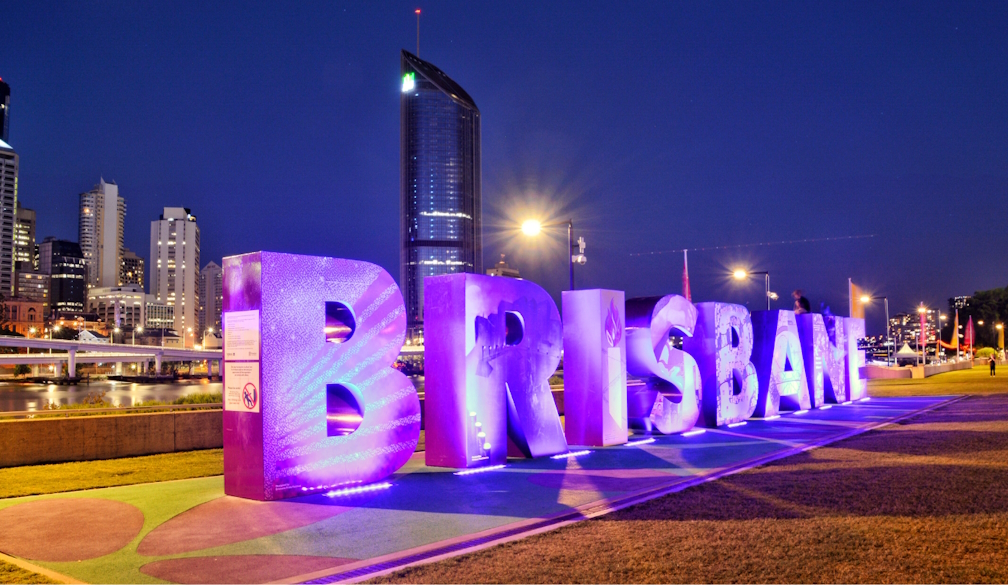What makes Brisbane 2032 different from Paris and the rest? A ‘climate-positive’ Olympics plan for lasting benefits
- Written by Ali Cheshmehzangi, Head of School, School of Architecture, Design and Planning, The University of Queensland

The Paris Olympics have put Brisbane back in the spotlight as host of the 2032 Olympic and Paralympic Games. The plans for 2032 make one thing clear: these games will be different.
Brisbane is the first city required by its contract with the International Olympic Committee (IOC) to host a climate-positive games. This means the “the carbon savings they create will exceed the potential negative impacts of their operations”, the IOC says[1]. It’s a major shift in how sustainable the games are expected to be.
The Brisbane 2032 organisers’ strong focus on including the regions and legacy planning also distinguishes these games from past events. Brisbane isn’t looking for just a glossy four-week city show. The aim is to boost the broader region with future-focused, sustainable facilities and infrastructure. These will have lasting social, environmental and economic benefits.
The climate crisis is a challenge of unprecedented proportions. If these games serve as a much-needed push for Brisbane – and the rest of the world – to do more, then we can only be thankful.
But activities such as building the infrastructure for the event and transporting the athletes and their specialist equipment from around the world will create huge greenhouse gas emissions. Hosting a global sporting event that removes more carbon from the atmosphere than it emits will be no mean feat.
Indeed, 2021 Swiss research[2] found recent games failed to achieve their ambitions to become more sustainable – though Sydney did relatively well[3] in 2000.
How can Olympics be climate-positive?
Such a challenging task calls for a multifaceted strategy. As QUT professor[4] Marcus Foth has observed, it will require an entirely new approach to the economy and society, which prioritises the planet and life itself.
One simple strategy is to use existing buildings to house athletes and host events where possible. All new or significantly upgraded venues will target the highest six-star rating under Green Star[5] building standards.
Public and active transport will be given priority. All new buses funded by Translink (the state’s public transport agency) in South-East Queensland are to be zero emissions from 2025.
As well as meeting the IOC’s climate-positive requirement, such initiatives will help to achieve Queensland’s climate ambitions. These include the goals of net-zero emissions by 2050[6] and powering the state with 70% renewable energy by 2032[7].
It’s not all about Brisbane
The Brisbane games can also be a catalyst for long-term, sustainable urban and regional improvement. Regional inclusivity[8] is a vital part of plans for the games. Sharing Olympic events across the state will distribute outcomes and prosperity beyond the city.
A design-led, precinct-based approach, taking local conditions into account, helps unlock wider community benefits. It’s an opportunity to strengthen regional co-operation and local capacities.
Most events will be held across three locations: Brisbane, the Gold Coast and the Sunshine Coast. Some events are to be held in regional Queensland. Two interstate venues have been flagged for Sydney and Melbourne.
With venues distributed across Brisbane and regional areas, transport and infrastructure upgrades will also need to be dispersed. Road and rail capacity are to be increased on the transport corridors connecting the three games zones. Major tourism hubs on the Gold Coast, Sunshine Coast and Brisbane will be better connected as a result.
Brisbane 2032 is aiming for 90% of travel to events to be by public transport and active transport, such as cycling and walking. There will be seven “walkable” inner-city venues. Games preparations are accelerating long-term plans for public transport and other transport infrastructure to meet the needs of the state’s growing population.
A legacy that will last decades
Brisbane’s ability to embrace and act on place-based approaches will be central to the success of these Olympics and their legacy. Place-based approaches recognise that each place has unique local needs and conditions – including environmental and cultural contexts. Such approaches deliver a range of benefits, by building community resilience, fostering a sense of ownership and encouraging engagement.
Elevate 2042[9] is a 20-year strategy to leverage the benefits of the event before and after the games. Its themes align with the United Nations Sustainable Development Goals. Its stated vision is:
By 2042, we will live in an inclusive, sustainable and connected society, with more opportunities in life for everyone.
The legacy plan’s focus on long-term use of facilities and infrastructure is promising. It offers hope that hosting the Olympics will benefit future generations and avoid underuse of venues once attention has turned to the next host city.
Ingraining legacy planning in its preparations is a crucial move for Brisbane. The games are seen as not just a sporting event but as a vehicle to advance the economy, improve environmental outcomes and enhance connections between people and places. This will help shape progressive outcomes.
Architecture, design and planning are key professions when planning for this international event. These disciplines are working together to create thoughtful, resilient and vibrant interventions that will benefit communities for many years.
Brisbane has a once-in-a-lifetime opportunity to shape a city and regional communities so they continue to shine brightly long after the excitement and gloss of the games have faded. The target is not just 2032 but also 2050 net-zero targets and beyond.
References
- ^ says (www.anocolympic.org)
- ^ 2021 Swiss research (www.nature.com)
- ^ Sydney did relatively well (www.newsworthy.org.au)
- ^ QUT professor (www.abc.net.au)
- ^ Green Star (new.gbca.org.au)
- ^ net-zero emissions by 2050 (statements.qld.gov.au)
- ^ 70% renewable energy by 2032 (www.energyandclimate.qld.gov.au)
- ^ Regional inclusivity (q2032.au)
- ^ Elevate 2042 (q2032.au)
















